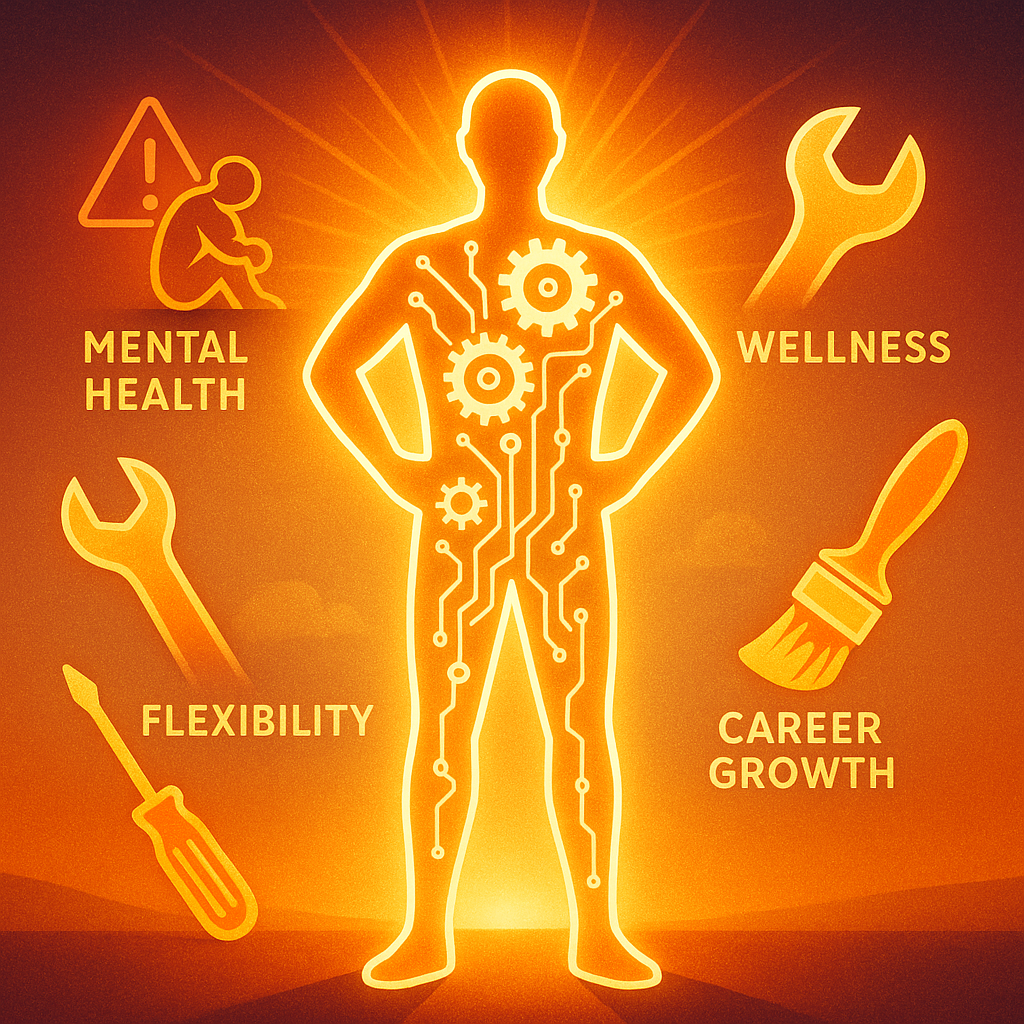The terms ‘Breakdown Maintenance’ and ‘Preventive Maintenance’ may sound too mechanical when we are talking about employee well-being, which is an HR-related area. However, the concept of maintenance in today’s modern workplace bears significance when it comes to employee well-being and extends beyond machinery or equipment. The whole point is developing a proactive approach to support employees and how it can boost productivity, engagement, and job satisfaction. The same goes for preventive maintenance, which ensures smooth operations in industrial settings. Research suggests that a more resilient and productive workforce is seen at organizations that prioritize health, personal development, and work-life balance.

Understanding Breakdown and Preventive Maintenance
Be it any sector or business, to ensure efficiency and functionality, maintenance strategies are deployed as they are a critical aspect of the workplace. The difference between breakdown maintenance and preventive maintenance is that while the former is reactive (addressing failures only after they occur), the latter is proactive, i.e., helping in mitigating issues before they escalate. Preventive maintenance has the upper hand or edge over breakdown maintenance, as in a workplace, waiting until employees face burnout or disengagement before offering support leads to higher turnover, lower morale, and reduced productivity.
On top of that, preventive strategies bring in a complete framework of proactiveness for addressing employee-related issues. These involve regular interventions to sustain mental, physical, and professional well-being, similar to routine servicing, which keeps equipment running smoothly. Besides, there are structured wellness programs, mental health resources, and career development initiatives to help employees stay engaged and avoid workplace stress.
The World Health Organization (WHO) also emphasizes the importance of proactive employee well-being strategies, stating that stress-related problems cost the world economy billions of dollars a year. The cost of neglecting preventive well-being measures can be high, as forgetting to implement these measures can lead to significant long-term organizational expenses. For instance, stress and burnout in the workplace drive absenteeism, medical claims, and lowered productivity.
The Workplace Parallel: Employee Wellbeing as Preventive Maintenance

It is clear by now that preventive maintenance isn’t just for machines. It applies to employees as well and contributes to a healthy workplace atmosphere. Therefore, companies that take a smart proactive approach by implementing measures like wellness programs, health check-ups, and counseling help employees manage stress and maintain productivity. This can also be seen as a smart management of human resources and avoiding organizational expenses.
Today, we have a big chunk of employees from the millennial and sandwich generations, highlighting the evolving family structures. Many employees juggle caregiving responsibilities as they may be looking after their ageing parents as well as school or college-going children. Here comes the role of supportive policies such as extended parental leave and flexible work arrangements that can allow them to balance personal and professional lives more effectively, reducing workplace stress and enhancing job satisfaction.
At the same time, continuous learning is vital for surviving in a competitive world to avoiding falling prey to outdated skills. This means preventing skill stagnation by engaging employees in regular skill development, leadership training, and career coaching, making them more adaptive to a dynamically changing workplace.
In this way, when organizations prioritize a preventive approach to employee well-being, they cultivate a healthier, more engaged workforce, ultimately driving long-term success.
Striking a Balance: The Ideal Workplace Strategy
While we have talked about preventive measures as more beneficial than reactive ones, organizations must be prepared with the latter ones as well to address unforeseen or unprecedented challenges. The reactive measures act as immediate support systems in times of emergency when employees need timely help when in crisis. However, the overall focus should be on developing a balance between the two approaches and minimizing the need for reactive interventions in the long run.
The Future of Workplace Wellbeing: A Shift Towards Prevention
The workplace is shifting from crisis management to proactive well-being strategies. Organizations that embrace this change will improve employee satisfaction, retention, and overall productivity. Investing in preventive well-being measures safeguards an organization’s most valuable asset—its people. By fostering a culture that prioritizes holistic development and proactive care, companies can create a thriving workplace where employees perform at their best, both professionally and personally.
Read Also : HR Is Not a Support Function—It’s the CEO’s Most Powerful Growth Engine
The Fine Balance: Navigating Work, Life, and Mental Wellbeing
From Gatekeeping to Gateway Building: Transforming How Organisations Create Access
Leadership In Talent Management: A Powerful Driver for Economic Growth












